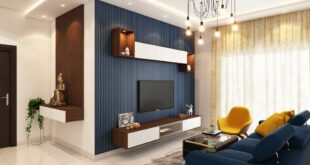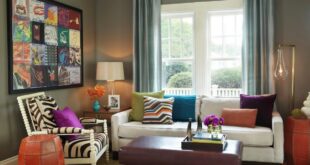Mixing wall tiles with other materials like wood, metal, and paint is an excellent way to transform your space. Whether you’re looking to bring in a touch of warmth, industrial edge, or a sleek minimalist style, combining these materials offers endless possibilities. Tiles are often seen as a functional element in any room, but when paired with the right materials, they can elevate your interior design to new heights.
With years of experience in interior design and material sourcing, we’ve seen first-hand how blending tiles with wood, metal, and other elements can completely change the feel of a room. In this guide, we’ll walk you through why mixing wall tiles with other materials is a game-changer, share popular combinations to try, and provide creative design ideas to get you started.
Shopping wall tiles for kitchens and bathrooms will help ensure the tiles you choose not only complement the materials around them but also enhance the overall look and feel of your space.
Combining Wall Tiles with Wood, Metal, and Paint for Modern Interiors

- Combining wall tiles with materials like wood, metal, and paint creates a modern, sophisticated look.
- The right tile and material combination enhances both aesthetics and functionality.
- We’ll explore how to mix these materials effectively for a harmonious and unique interior design.
- Learn the basics of maintaining your mixed-material designs to keep them looking their best.
1. Why Mix Wall Tiles with Other Materials?
When it comes to home design, mixing wall tiles with other materials might seem like a simple idea, but it’s an incredibly effective way to enhance both the look and feel of your space. So why should you consider it?
Aesthetic Appeal and Versatility
The beauty of mixing tiles with other materials lies in the endless aesthetic possibilities. Tiles can provide texture, pattern, and colour that no other material can quite match. However, by incorporating materials like wood or metal, you add warmth, sleekness, or even a rustic touch—depending on your style.
For example, pairing sleek ceramic tiles with natural wood elements softens the look, bringing warmth and comfort to a more clinical material. Alternatively, combining tiles with metal or glass can introduce sharpness and shine, creating a modern, high-end feel. The combinations are virtually limitless, and this versatility allows you to tailor each room to your exact design preferences.
Functional Benefits
Tiles are durable, easy to clean, and, most importantly, moisture-resistant. These practical qualities make them an ideal choice for spaces like kitchens and bathrooms where function is just as important as form. When you mix wall tiles with other materials, you’re not only enhancing the aesthetic appeal but also improving the functionality of your design. The durability of tiles, combined with the flexibility of materials like wood or metal, allows you to create spaces that are both stylish and practical.
Consider a bathroom where glossy tiles on the walls pair seamlessly with wood accents or a kitchen backsplash that combines the practicality of porcelain tiles with the sleekness of metal fixtures. The functional benefits are clear: tiles give you a surface that’s easy to maintain, while other materials like wood or metal can introduce elements that are better suited for specific tasks.
2. Popular Materials to Pair with Wall Tiles

When it comes to mixing wall tiles with other materials, the key is to find combinations that complement each other and enhance the overall look of the space. Below are some of the most popular materials to pair with wall tiles, offering versatility and an array of design options for different rooms.
Wood
How it Works: Wood is the perfect contrast to the hard, cold feel of tiles. It adds warmth, texture, and a sense of nature to any room. Whether you’re using wood-look tiles or combining ceramic tiles with real wood accents, this combination brings balance and elegance.
Best Uses:
- Wood-look Tiles: Ideal for those who want the appearance of wood with the durability of tiles. These can be used in kitchens, bathrooms, or living rooms to add warmth while retaining the easy-to-clean benefits of ceramic or porcelain tiles.
- Wooden Shelves or Panels: In kitchens or bathrooms, you can mix ceramic or subway tiles with wooden shelves or wall panelling to soften the hard edges and bring in natural textures. This creates a modern yet welcoming atmosphere.
Wood doesn’t have to be limited to just floors; integrating it with tiles on the walls is a great way to introduce a mix of textures and tones.
Metal
How it Works: Metal accents are a popular choice for adding a modern, industrial touch to any room. Metals like stainless steel, brass, or copper contrast beautifully with tiles, particularly those with a matte or glossy finish. Metal fixtures not only enhance the visual appeal of tiles but also lend a sleek and contemporary edge to the space.
Best Uses:
- Kitchen Backsplashes: Combining shiny metal tiles with porcelain or ceramic tiles in kitchens creates a clean, polished look while providing durability and resistance to cooking stains and moisture.
- Metal Framing: Pair metal-framed mirrors, light fixtures, or shelving with wall tiles to create a balance of materials that are both stylish and functional. The combination of sleek tiles with metal elements brings an industrial yet sophisticated aesthetic.
Metal works best in spaces where durability and style need to coexist. The reflective quality of metal adds an extra dimension, making spaces feel larger and brighter.
Paint
How it Works: Mixing painted walls with tiled features offers endless possibilities for creating unique spaces. While tiles bring a structured, often patterned look, paint can introduce fluidity and colour flexibility. This combination allows you to refresh the room with ease, making it an excellent choice for feature walls or accent areas.
Best Uses:
- Feature Walls: Use bold colours or patterns on your painted walls and contrast them with neutral or patterned tiles for a striking feature wall. The combination of painted walls and tiled areas can be both eye-catching and balanced, especially when you use complementary colours.
- Contrasting Zones: In kitchens or bathrooms, use tiles as the backsplash or wall covering in certain areas and paint the remaining spaces to create zones within the room. This is a great way to add dimension and personality to any room.
Paint also gives you the flexibility to switch things up over time. When you get tired of a particular look, repainting is a much simpler option than replacing tiles.
Glass and Stone
How it Works: Glass tiles and stone are luxurious, timeless materials that add both style and functionality. Glass tiles create a smooth, reflective surface, which contrasts beautifully with the natural, textured look of stone. Whether you opt for marble, granite, or natural stone tiles, pairing them with glass accents brings a sophisticated and high-end look to your space.
Best Uses:
- Bathrooms: Glass mosaic tiles paired with marble or granite walls create a spa-like atmosphere, perfect for luxury bathrooms or wet rooms.
- Living Rooms or Feature Walls: Incorporating stone tiles with glass inserts or accents in living rooms can create a feature wall that becomes the focal point of the room. The combination is both functional and visually appealing, particularly in spaces where you want to make a statement.
Stone brings an earthy, raw beauty to your space, while glass introduces a sleek, modern element. Together, they create a balanced, refined look.
3. Creative Design Ideas for Mixing Wall Tiles with Other Materials
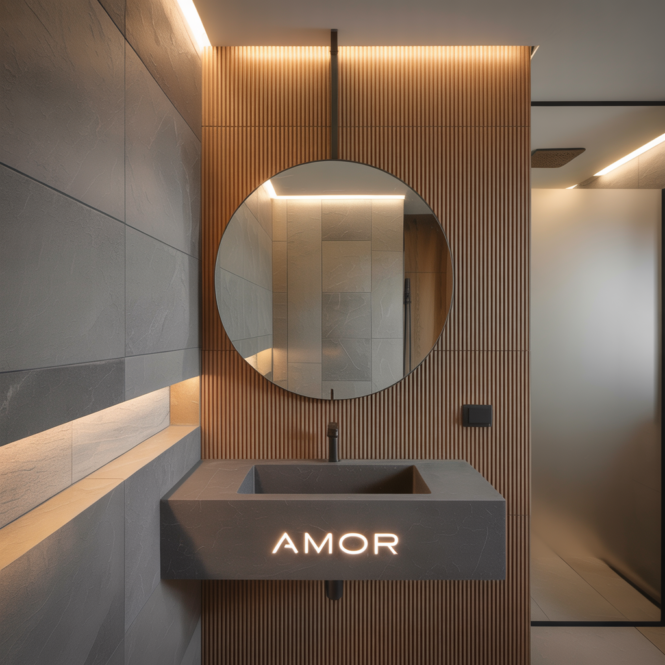
Now that you’re familiar with the materials that work well with wall tiles, let’s dive into how you can use them to create modern, stylish designs in different rooms. The key to success is finding the right balance between functionality and aesthetic appeal. Here are some creative ideas to get you started.
Kitchen Backsplashes
Kitchens are one of the most practical spaces to mix wall tiles with other materials. A backsplash not only serves a protective function but also offers an opportunity to make a bold design statement.
Mixing Wall Tiles with Wood and Metal:
Combine the durability of porcelain or ceramic tiles with the natural warmth of wood for a backsplash that’s both practical and stylish. You can pair natural wood shelves or wooden panelling with sleek, glossy tiles in neutral tones. Add stainless steel or copper metal accents to introduce a polished, modern touch. The combination of these materials will make your kitchen feel warm and inviting, while the tiles offer easy cleaning and moisture resistance.
Glass Tiles with Stone Countertops:
For a more luxurious look, consider using glass mosaic tiles in your kitchen. These can be paired beautifully with a stone countertop, like marble or granite. The reflective quality of the glass tiles contrasts beautifully with the solid texture of the stone, creating a high-end, sophisticated design. Glass tiles are also perfect for creating intricate patterns that add depth and interest to the space.
Bathroom Feature Walls
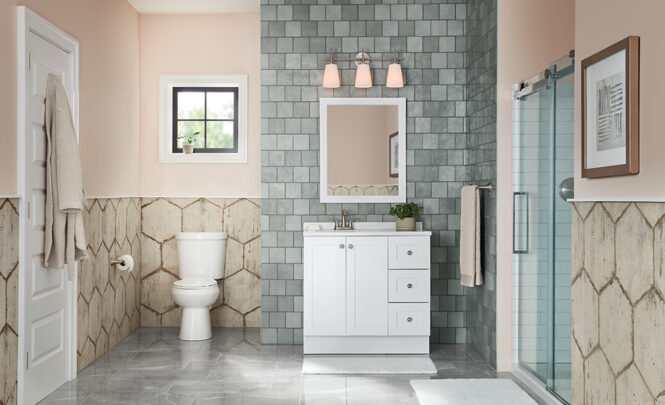
Bathrooms are another area where mixing wall tiles with different materials can work wonders. They’re a space that benefits from both functionality and style, and combining tiles with materials like wood, metal, and glass can create a stunning environment.
Tiles and Wood for a Spa-Like Ambience:
Imagine combining natural wood accents with sleek ceramic tiles on your bathroom walls. Wood-look tiles are ideal for this because they add warmth without the maintenance of real wood. You can mix these with crisp white or patterned tiles to create a spa-like feel. Wood shelving, a wooden mirror frame, or even wooden flooring will complement the tiled walls, providing a natural yet refined aesthetic.
Metal and Glass for an Industrial Look:
For a more contemporary, industrial bathroom design, consider pairing metal fixtures with glass tiles. For example, you could use a combination of glossy white tiles with a black metal frame for your shower enclosure or mirror. Glass tiles can add a subtle shine and texture, while the metal accents give the room a bold, modern edge. This combination works well in modern bathrooms where you want to make a design statement without overwhelming the space.
Living Rooms and Feature Walls
Feature walls are a great way to add personality to your living room, and mixing wall tiles with other materials can turn a simple feature wall into the focal point of the room.
Stone Tiles with Metal and Paint:
For a bold and modern feature wall, pair stone tiles with metal elements. You can use marble or slate tiles as the base, then add metallic accents like copper shelves or a metal-framed artwork. The combination of stone and metal creates a striking contrast, while the paint on surrounding walls can be used to either complement or contrast the feature wall. Opt for neutral tones like grey, black, or white for a minimalist vibe, or add colour to make the space pop.
Wood and Tile for a Natural Look:
If you’re aiming for a more natural and relaxed feel, combine wood and tile on your feature wall. Wood paneling on part of the wall, paired with decorative tiles in neutral colours, brings warmth and texture to the room. You can mix different tile sizes, shapes, or even textures to add interest while maintaining a calm, earthy atmosphere.
Entryways and Hallways
First impressions count, and entryways and hallways are no exception. These spaces can be small but impactful, and the right combination of tiles and other materials can make them both functional and stylish.
Tile Flooring with Wood or Metal Fixtures:
In entryways, combine tiled floors with wooden or metal accents. Wood-look tiles are great for this because they add a welcoming vibe while still being easy to maintain. You can also use patterned tiles to create a statement floor. Pair this with metal coat racks, wooden shoe benches, or even a metal-framed mirror to complete the look. This combination will give your entryway a modern yet inviting feel that sets the tone for the rest of the house.
Glass Tiles with Stone or Brick Walls:
For a more contemporary entryway, consider using glass tiles on the walls, paired with stone or exposed brick for the surrounding features. This mix creates a sleek, stylish space with an interesting contrast between the reflective nature of glass and the rugged texture of stone or brick. You can add some wood elements, like a wooden bench or shelves, to soften the industrial feel and create a balanced, welcoming space.
4. How to Care for Mixed Material Walls
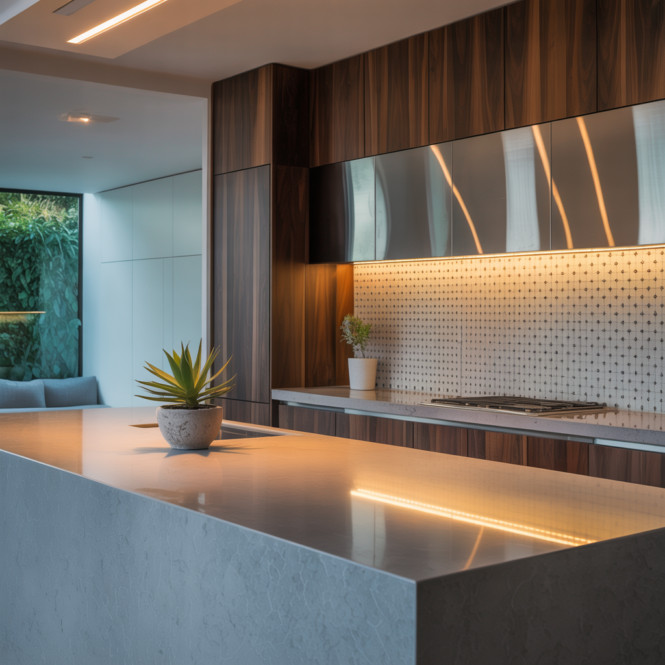
When you incorporate a combination of wall tiles and other materials into your design, it’s essential to maintain them properly to keep them looking their best. Different materials require different types of care, but with the right maintenance, your space will continue to shine for years to come.
Tile Care
Tiles are incredibly durable and low-maintenance, but they still require some attention to keep them in top shape.
General Tile Maintenance:
To keep your tiles looking fresh, regularly wipe them down with a damp cloth to remove dust, dirt, and grease. For stubborn stains, use a gentle tile cleaner. Avoid harsh chemicals that could damage the finish of your tiles. If you have grout lines, use a grout cleaner and a brush to keep them spotless.
Sealing Tiles:
If you’re working with porous tiles like natural stone, make sure they are sealed to prevent moisture from seeping in and causing stains. Sealing your tiles helps protect them from water damage, which is particularly important in bathrooms and kitchens. Reapply the sealer as recommended by the manufacturer to maintain the tiles’ appearance and durability.
Wood Care
Wood adds warmth and texture to your design, but it does require more attention than tiles. Whether you’ve incorporated real wood panels or wood-look tiles, you’ll want to ensure they stay in great condition.
Cleaning and Conditioning:
Dust wooden surfaces regularly to prevent dirt from accumulating. For wooden panels or shelving, use a soft cloth and a wood cleaner to wipe them down. You can also apply wood conditioner or oil every few months to maintain the finish and avoid drying out the material.
Protecting from Moisture:
Wood is sensitive to moisture, so be mindful of spills, particularly in areas like bathrooms or kitchens. If any water splashes onto wood surfaces, wipe it off immediately. For real wood accents, ensure they are properly sealed to minimise moisture damage. Wood-look tiles, on the other hand, are far more water-resistant but still need to be cleaned to maintain their sheen.
Metal Care
Metal elements add an industrial and contemporary touch to your design, but metals like stainless steel, copper, and brass can tarnish or rust over time if not cared for properly.
Regular Polishing:
To maintain the shine of your metal elements, regularly polish them with a metal cleaner. Stainless steel, for example, can develop smudges and fingerprints, so use a soft cloth to buff it out and restore its reflective surface. For copper or brass fixtures, you may need to use a specialised cleaner to prevent tarnishing.
Preventing Corrosion:
Moisture is one of metal’s worst enemies. In bathrooms or kitchens, keep metal fixtures dry as much as possible, wiping them down after use to prevent rusting. If you’re using metal accents in humid areas, opt for corrosion-resistant metals like stainless steel or aluminium.
Paint Care
Painted surfaces are often the easiest to maintain in a mixed-material room, but they still require some upkeep, especially in high-traffic areas like kitchens and hallways.
Cleaning Painted Walls:
For walls painted with washable paint, use a soft sponge or cloth with mild soap and water to wipe away dirt and grease. Avoid abrasive scrubbers that could damage the paint finish. If you have a feature wall with a bold colour, ensure that you use a paint finish that can withstand regular cleaning, such as satin or semi-gloss.
Touch-Ups:
Over time, painted walls can start to show signs of wear. Touch up any chipped or scratched areas with the same paint to maintain a consistent colour throughout. Keeping a small can of leftover paint for touch-ups is a great idea, especially if you have accent walls or contrasting colours.
 Imagup General Magazine 2025
Imagup General Magazine 2025

